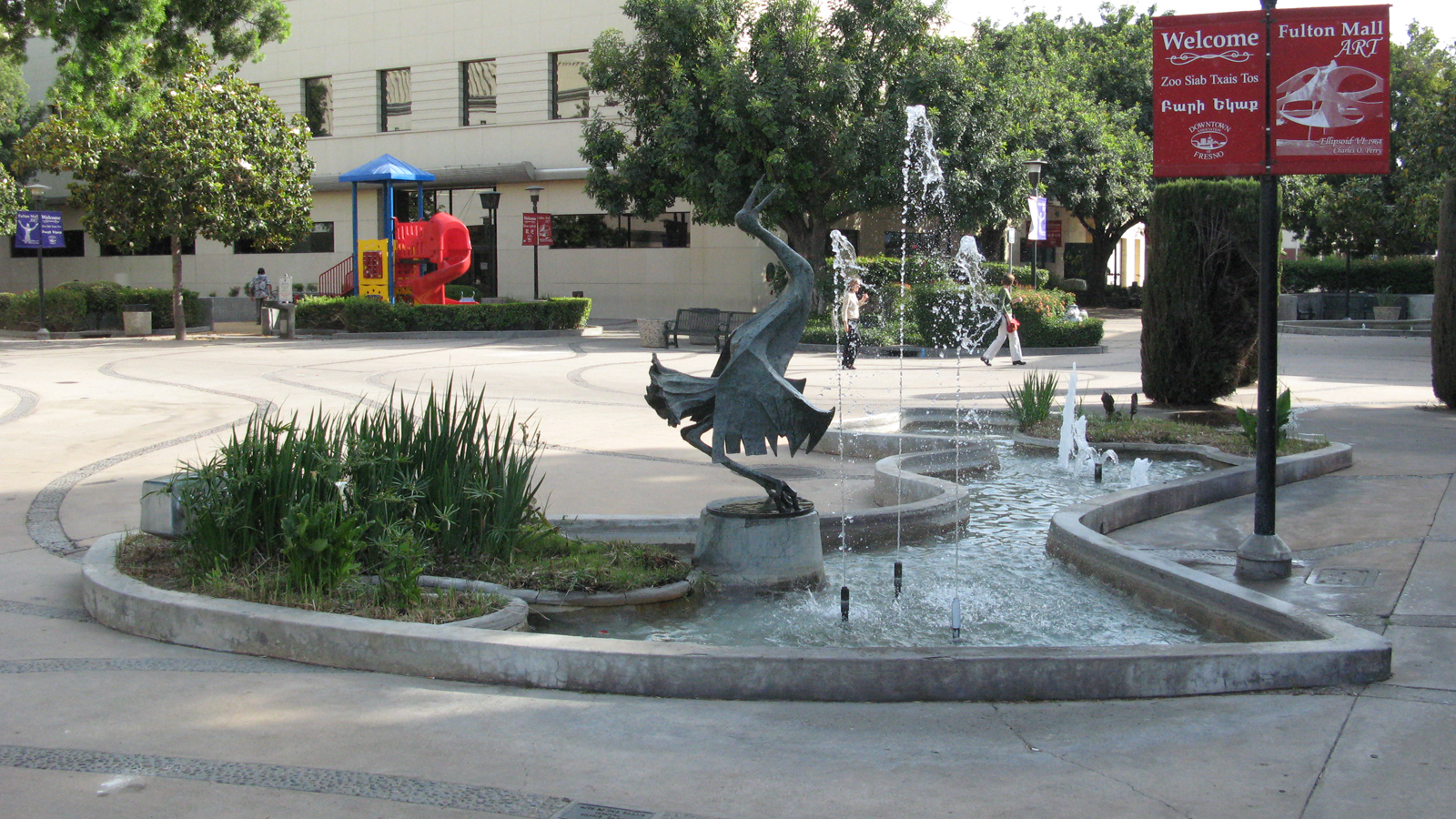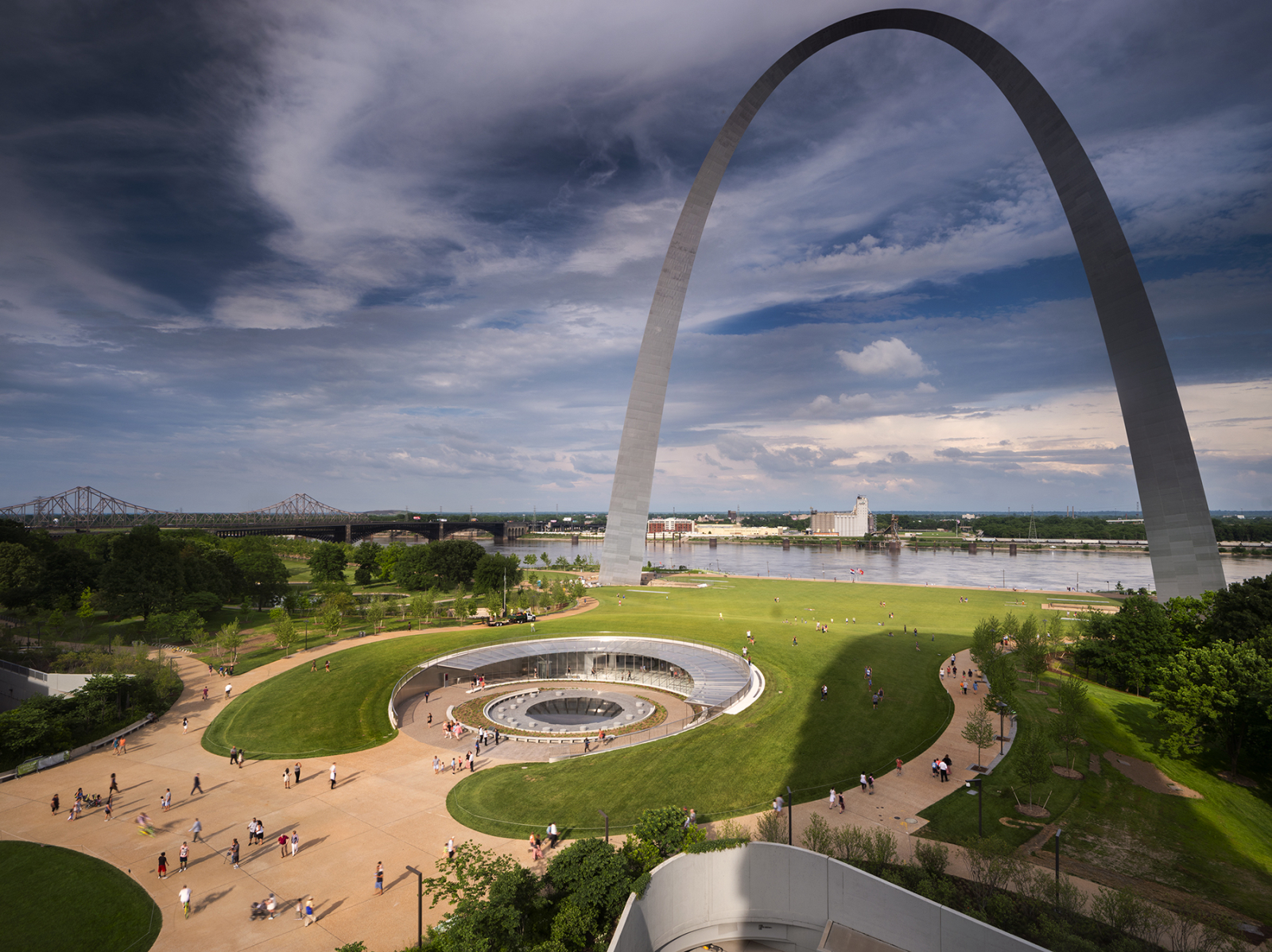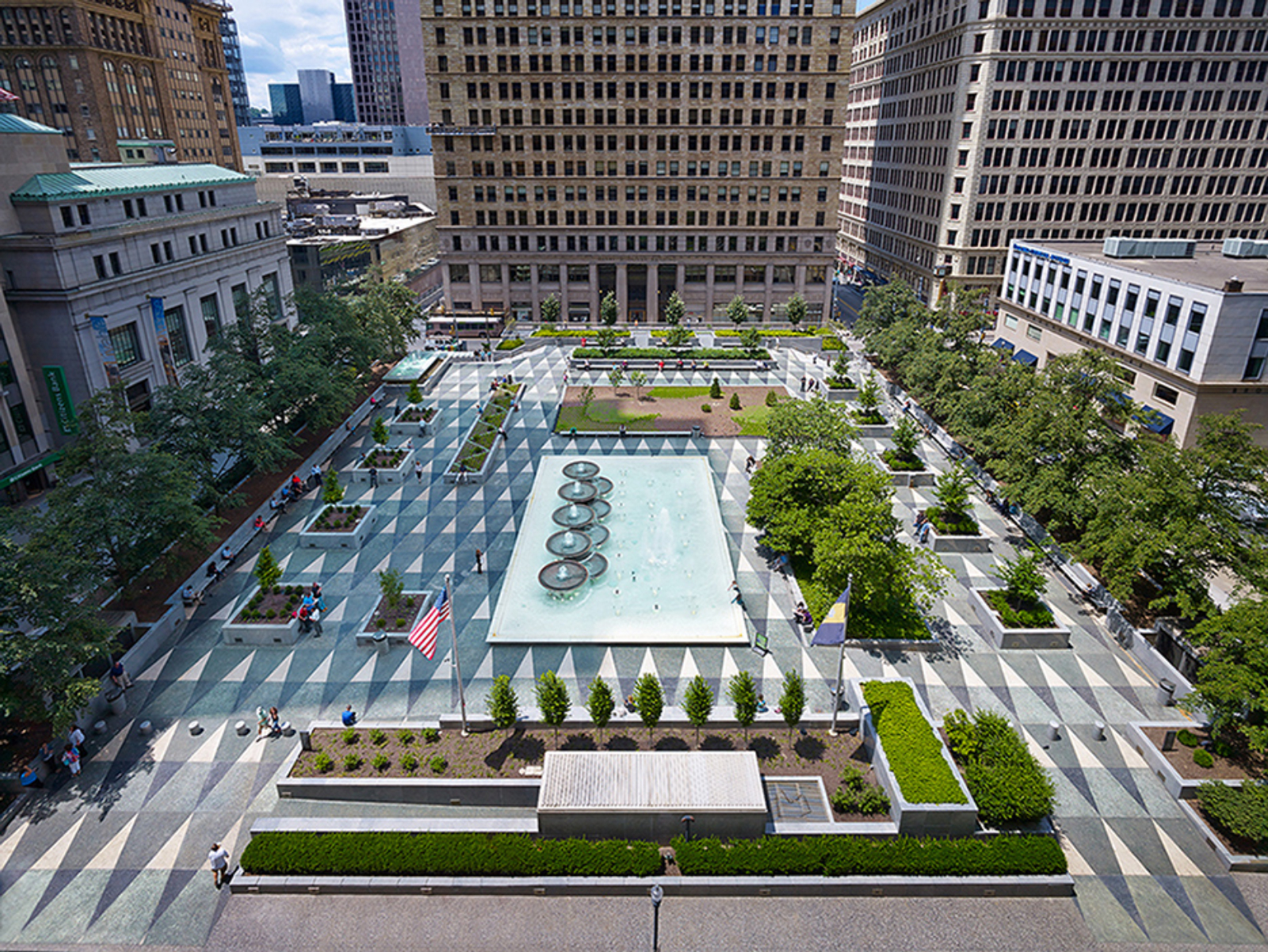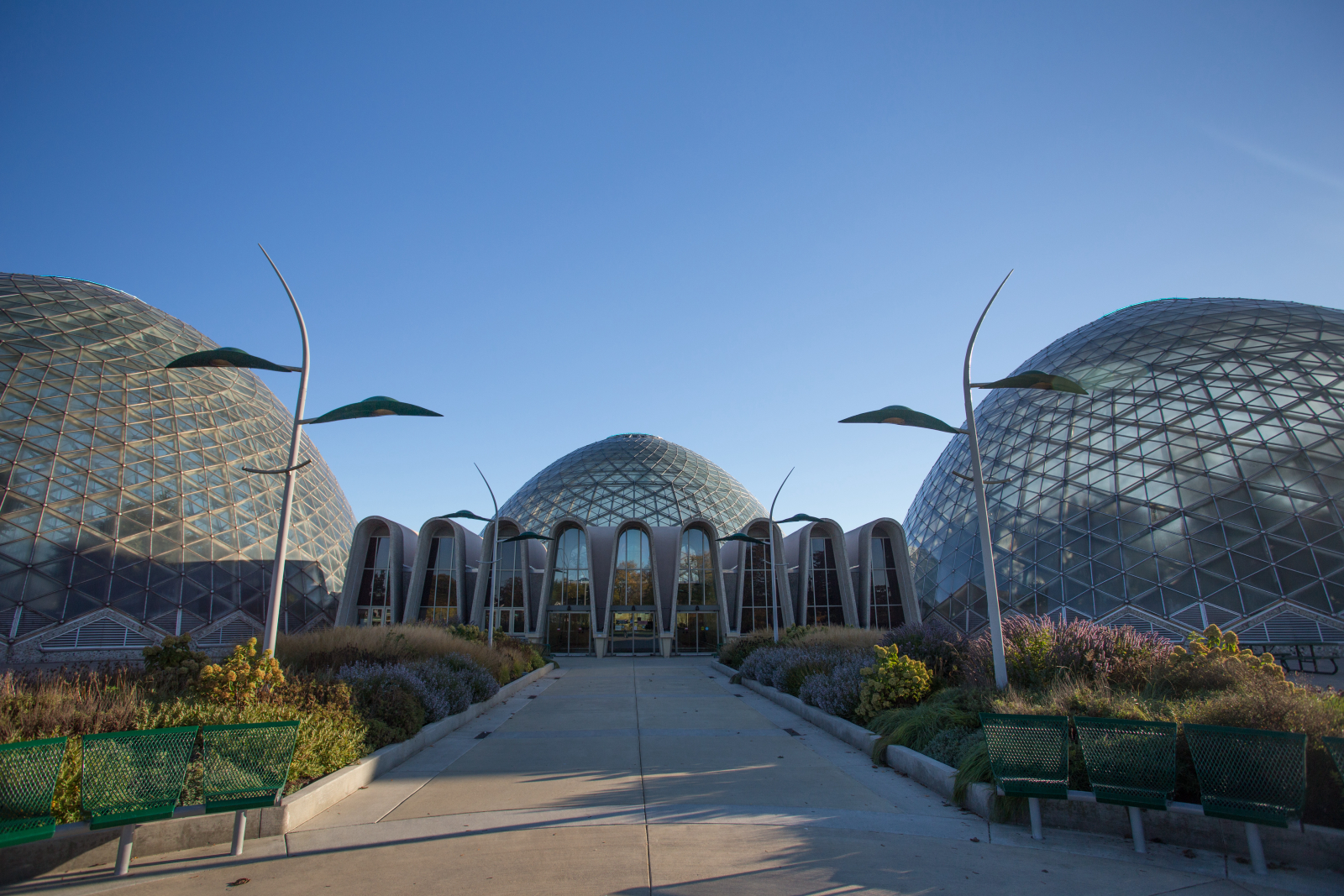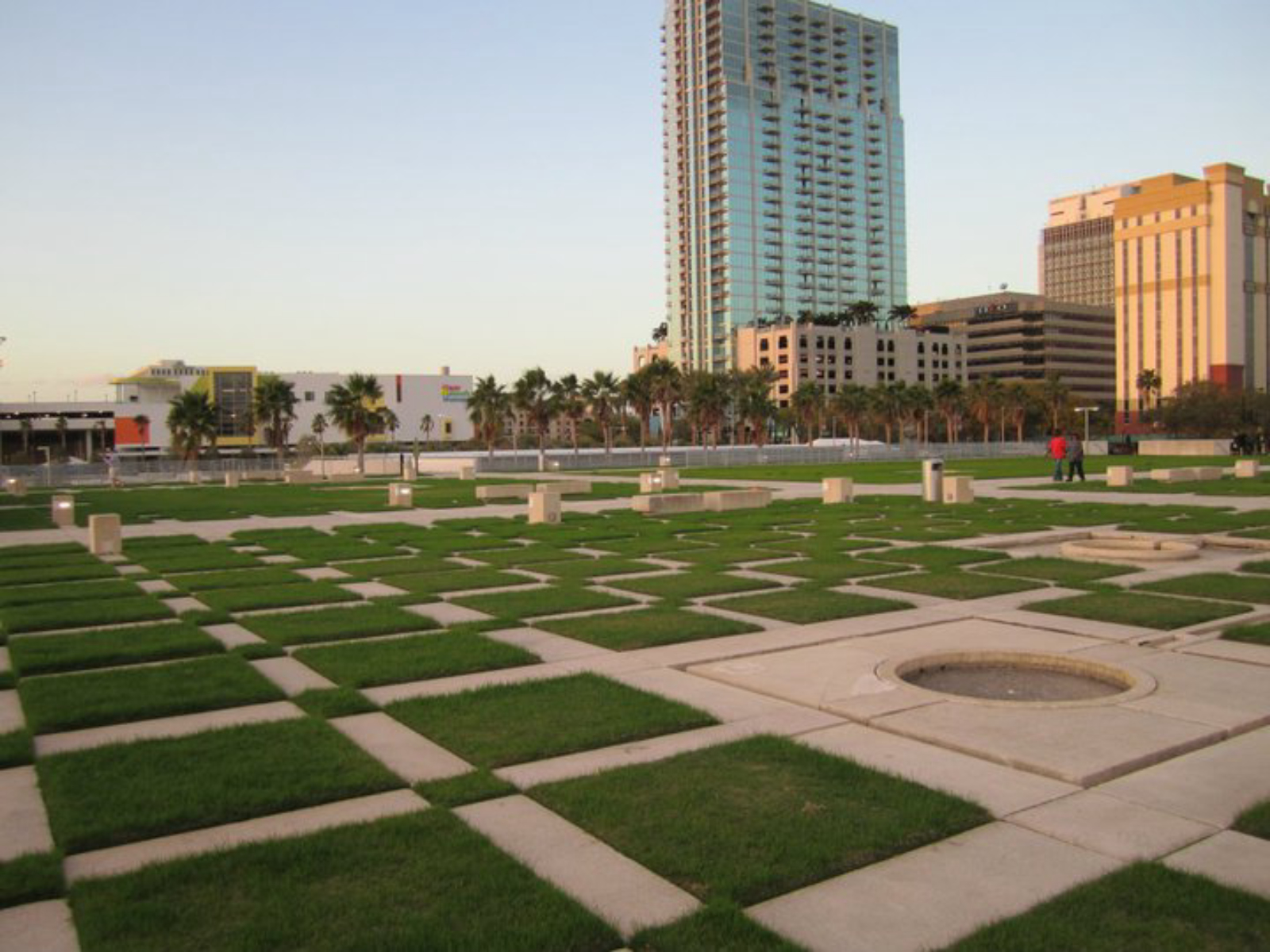The Jefferson National Expansion Memorial Association was formed by St. Louis residents in 1933 with the hope of revitalizing their downtown waterfront through investment in a civic development commemorating the city’s role in American westward expansion. Having gained congressional support to pursue the project through means of the National Park Service, the Federal Government began acquiring Riverfront district properties in 1936, demolishing them in a window from 1940-41 before progress was halted by the war. When the project resumed in 1947, a national competition was held to select a design for the memorial, bringing in submissions from a number of high profile American architects and more than 200 applicants overall. Beyond seeking a monument to commemorate President Jefferson, the brief called for an open air “campfire theater”, limited reconstruction of historic buildings, a museum devoted to Westward Expansion, recreational facilities, parking accommodations, and plans to relocate a railroad running through the site (Architectural Record, April. 1947). The winning design came from a team consisting of architects Eero Saarinen and J. Henderson Barr, sculptor Lily Swann, landscape architect Dan Kiley, and designer Alexander Girard. Their entry effectively met the varied components of the competition, but was squarely dominated by the focal gesture of Saarinen’s monumental parabolic arch. In the intervening decade, while complications around the rail line delayed construction, the crowded plan was simplified and meticulously refined; leaving The Arch alone in a landscape crafted to echo and elevate its profile against the dramatic dual backdrops of St. Louis and the Mississippi River.


